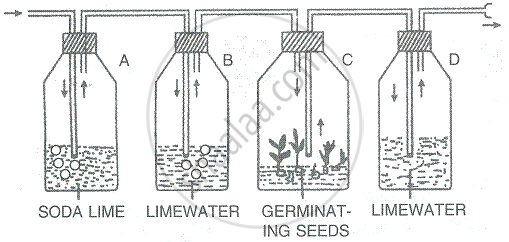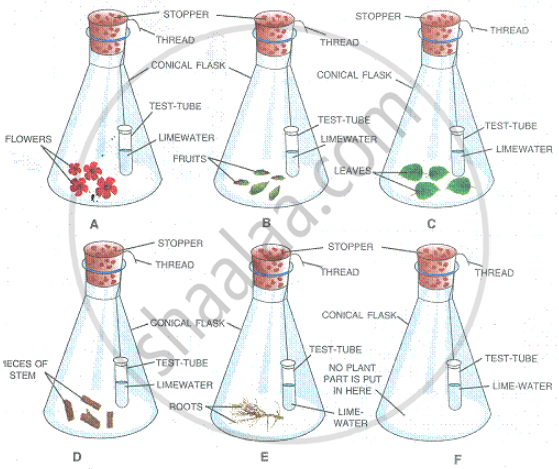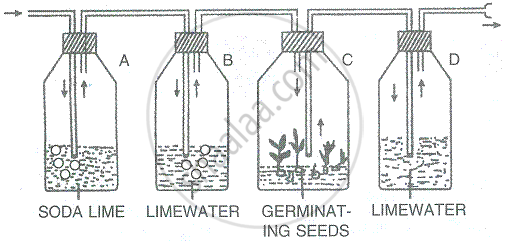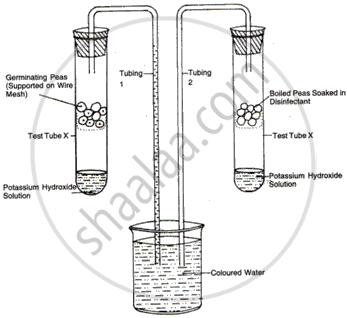Advertisements
Advertisements
Question
In order to study and prove a particular physiological process in plants, the following experiment was set up. Study the same and then answer the question that follow:

Represent the physiological process named in question 4.1 in the form of a chemical equation.
Solution
\[\ce{C6H12O6 + 6O2 -> 6CO2 + 6H2O + 38ATP (Energy)}\]
APPEARS IN
RELATED QUESTIONS
Describe one experiment you would perform to demonstrate the following phenomena: The germinating seeds produce heat.
Describe one experiment you would perform to demonstrate the following phenomena: The germinating seeds to give out carbon dioxide.
The following diagram refers to an apparatus which is used to demonstrate a physiological process:

What is the purpose of keeping potassium hydroxide solution in test tubes X and Y?
The following diagram refers to an apparatus which is used to demonstrate a physiological process:

Why has the coloured water risen in tubing 1?
Given below is a set of six experimental set-ups (A-F), kept in this state for about 24 hours.

In how many flasks, the different plant parts have been kept under observation?
Given below is a set of six experimental set-ups (A-F), kept in this state for about 24 hours.

What is the purpose of keeping a test-tube containing limewater in each flask?
In order to study and prove a particular physiological process in plants, the following experiment was set up. Study the same and then answer the question that follow:

What change would you expect to observe in bottle 'D'?
In order to study and prove a particular physiological process in plants, the following experiment was set up. Study the same and then answer the question that follow:

In order to obtain accurate results, the bottle 'C' should be covered with black cloth. Why?
The given fig. refers to an apparatus which is used to demonstrate a physiological process:

(a) What is the purpose of keeping potassium hydroxide solution in test tubes X and Y?
(b) What is the purpose of keeping boiled peas soaked in disinfectant in test tube Y?
(c) Why has coloured water risen in tube 1?
(d) Name the biological process which causes the above rise.
(e) Define the biological process shown in the experiment.
Name the following:
The chemicals generally used to absorb carbon dioxide in respiratory experiments.
